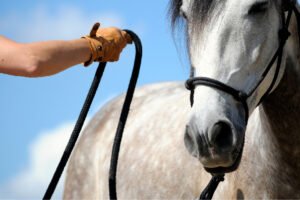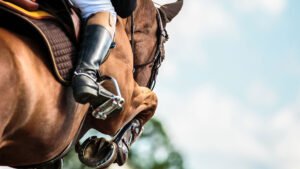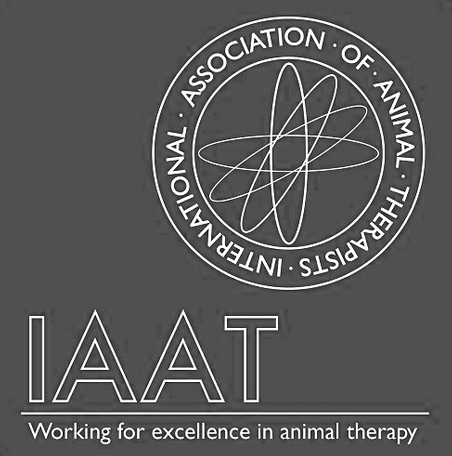In the equestrian world, physiotherapy is often associated with recovery -something to be considered only when a horse is lame or coming back from an injury (Atalaia et al., 2021). But this view fits with the reality only partially and significantly limits the potential of physiotherapy.
Lately the research has been highlighting the preventive role of physical therapy in maintaining equine health and preventing injury (Levine et al., 2020; Haussler, 2018; Schaeffer, 2014). Just as human athletes undergo regular physiotherapy to stay in top form – or to prepare for athletic performance -, horses benefit from proactive care that keeps their musculoskeletal system functioning optimally (Rogers et al., 2012).
Why Prevention Matters
Horses, especially those undergoing tight schedules of training, regular work or competition, are exposed to repeated mechanical loads (Back and Clayton, 2017). These loads, when combined with poor posture, training inconsistencies, or equipment issues, may result in microtraumas or subtle dysfunctions (ibid), which, if left unchecked, can escalate into more serious conditions, from soft tissue injuries to compensatory joint stress (Hinchcliff et al., 2014; Hodgson et al., 2014).
Physiotherapy can allow for early detection of these dysfunctions (McIlwraith, 2010): through regular evaluation and palpation, a trained therapist can identify tight fascia, muscle asymmetry, reduced joint range of motion, and subtle behavioural signs that may indicate discomfort (Rogers et al., 2020). Since these signs often precede overt lameness, early identification could allow prompt intervention (Hodgson et al., 2014).
Dyson et al. (2008) showed that horses often develop compensatory movement patterns long before owners or trainers notice any clinical signs. Early detection is key to halting progression.
The Importance of Teamwork
Other than making a difference for prevention, when physiotherapists work in teamwork with veterinary surgeons and the other professionals that orbit around the horse (e.g., trainer, farrier, nutritionist, saddle fitter, etc.) this can be the ultimate key to physical treatment selection that better support the horse’s health (Tabor, 2018). As well as offering treatments such as manual treatment and electrotherapy, with their knowledge of muscular physiology and principles of cardiovascular, strength and neuromuscular proprioceptive training, physiotherapists can take part in the planning of targeted and safe exercise training programmes for their patients (Tabor, 2018; Rogers et al., 2012).
Common Risk Factors Physiotherapy Can Address
Some of the most common underlying issues that can be proactively managed include:
- Muscle asymmetry – Discrepancies between left and right side musculature can indicate or cause imbalance and strain (Leśniak, 2021).
- Poor posture/Gait abnormalities – Horses who habitually work with a wrong posture are at higher risk of experiencing pain and/or soft tissues overload (e.g., back pain, shoulder discomfort, limb overload, etc.) (Löfqvist, 2025; Halucha, 2019)
- Compensations – Horses with subtle pain may compensate in other areas, increasing the risk of secondary injury (Weishaupt et al., 2010).
- Fascial restrictions – Tension in the fascial system limits movement and may interfere with muscle activation (Schultz et al., 2021).
Clayton and Hobbs (2017) emphasized the importance of recognizing and addressing subtle postural and gait abnormalities as a strategy for long-term injury prevention.
Preventive Techniques in Physiotherapy
Physiotherapy treatments are usually individualised and tailored, as each horse may respond differently to each modality depending on its conformation, workload, and the discipline it’s being trained for (Atalaia et al., 2021).
Common physiotherapy approaches I adopt for prevention aims may include:
- Dynamic exercises: I provide exercise programs which include in-hand work over poles, proprioceptive tools, and gymnastic groundwork improve strength, coordination, and balance.
- Postural retraining: Teaching horses to engage the thoracolumbar region and core musculature can prevent the overuse and overload of distal limbs (Back and Clayton, 2017).
- Owner/trainer formation: Training in warm-up routines, body condition scoring, and recognising behavioural signs of discomfort can empower proactive care.
- Regular physiotherapy sessions: Massage, myofascial release, stretching, and a range of electrotherapies to treat areas of muscular and fascial tension, improve joint range of motion, correct asymmetries, and eliminate possible compensations that may be uncomfortable or painful for the horse.
For example, Haussler and Erb (2006) found that pressure-sensitive areas in the back could be addressed through regular manual therapy, improving both comfort and performance capacity.
Long-Term Benefits of Preventive Care
Horses receiving consistent physiotherapy not only avoid injury but also show:
- Improved responsiveness under saddle
- Reduced behavioural issues linked to discomfort
- Enhanced muscle development and symmetry
- More balanced gaits and better postural endurance
- Longevity in work or sports careers
(Tabor, 2022; Atalaia et al., 2021; Shakeshaft and Tabor, 2020)
Preventive care also reduces injury-related downtime (Reis et al., 2024) consequentially possibly reducing medical costs by addressing biomechanical issues before they require clinical intervention.
Physiotherapy is not just about treatment, it’s about preservation. Integrating physiotherapy into a horse’s routine care fosters resilience, balance, and overall wellness (Levine et al., 2020). Owners, riders, and trainers prioritising prevention over reaction give their horses the best chance at a long, sound, and successful working life.
_________________________________________________________________________________________________________
REFERENCES
Atalaia, T., Prazeres, J., Abrantes, J. and Clayton, H.M. (2021). Equine Rehabilitation: a Scoping Review of the Literature. Animals, 11(6), p.1508.
Back, W. and Clayton, H.M. (2017). Equine Locomotion. Edinburgh Scotland ; New York: Saunders Elsevier.
Halucha, D. (2019). Asymmetrical Limb Loading in Thoroughbred Racehorses as a Possible Cause for Injury. [Doctoral Dissertation] Available at: https://atrium.lib.uoguelph.ca/server/api/core/bitstreams/746a039f-0c30-4048-bb4c-e5eea3bdb1b6/content.
Clayton, H. M., & Hobbs, S. J. (2017). The role of biomechanical analysis in equine locomotion research: Past, present and future. Equine Veterinary Journal, 49(5), 560–568.
Dyson, S., Greve, L., & Pfau, T. (2008). Objective assessment of hind limb lameness in the horse using body-mounted inertial sensors. Equine Veterinary Journal, 40(6), 538–543.
Haussler, K. K., & Erb, H. N. (2006). Pressure Algometry for the Detection of Back pain in Horses: Sensitivity and Specificity. Equine Veterinary Journal, 38(6), 558–564.
Hinchcliff, K.W., Kaneps, A.J. and Geor, R.J. (2014). Equine Sports Medicine and Surgery: Basic and Clinical Sciences of the Equine Athlete. Edinburgh: Saunders Elsevier.
Hodgson, D.R., Mckeever, K.H. and Mcgowan, C.M. (2014). The Athletic Horse: Principles and Practice of Equine Sports Medicine. St. Louis: Saunders/Elsevier.
Leśniak, K. (2021). Prevalence of Functional Trait and Distal Limb Asymmetries and Their Effects on Equine Performance. Doctoral Thesis.
Levine, D., Adair, H.S., Marcellin-Little, D.J., Jaffe, M. and Kaneps, A.J. (2020). Editorial: Veterinary Sports Medicine and Physical Rehabilitation. Frontiers in Veterinary Science, 7(2020).
Löfqvist, L. (2025). Physical Workload and Musculoskeletal Symptoms in the Human-Horse Work Environment. Acta Universitatis Agriculturae Sueciae, 2012(2012:32).
McIlwraith, C.W. (2010). Recent Advances in Diagnosis of Equine Joint Disease. Proceedings of the 17th Kentucky Equine Research Nutrition Conference. Kentucky Equine Research, April(2010), pp.22–33.
Reis, I.L., Lopes, B., Sousa, P., Sousa, A.C., Caseiro, A.R., Mendonça, C.M., Santos, J.M., Atayde, L.M., Alvites, R.D. and Maurício, A.C. (2024). Equine Musculoskeletal Pathologies: Clinical Approaches and Therapeutical Perspectives—A Review. Veterinary Sciences, 11(5), p.190.
Rogers, C., Bolwell, C. and Gee, E. (2012). Proactive Management of the Equine Athlete. Animals, 2(4), pp.640–655.
Rogers, C.W., Bolwell, C.F., Gee, E.K. and Rosanowski, S.M. (2020). Equine Musculoskeletal Development and performance: Impact of the Production System and Early Training. Animal Production Science, 60(18), pp.2069–2079.
Schaeffer, W. (2014). Training the Event Horse. In: The Athletic Horse – Principles and Practice of Equine Sports Medicine. St Louis: Saounders/Elsevier.
Schultz, R.M., Due, T. and Elbrønd, V.S. (2021). Equine Myofascial Kinetic Lines. Kalmar, Sweden: Leanders Grafiska AB Kalma.
Tabor, G. (2018). Routine equine physiotherapy. Equine Veterinary Education, 32(7).
Tabor, G. (2022). Veterinary Physiotherapy for Back Pain in the Horse – UK Vet Equine. [online] UK Vet Equine. Available at: https://www.ukvetequine.com/content/clinical/veterinary-physiotherapy-for-back-pain-in-the-horse/?utm_source=chatgpt.com.
Weishaupt, M.A., Wiestner, T., Hoog, H.P., Jordan, P. and Auer, J.A. (2010). Compensatory Load Redistribution of Horses with Induced Weightbearing Hindlimb Lameness Trotting on a Treadmill. Equine Veterinary Journal, 36(8), pp.727–733.







